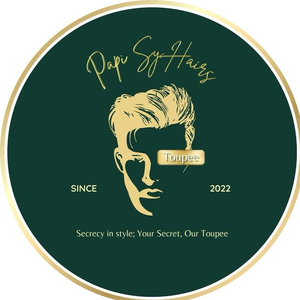Search
1/5
₱299.00
Papi Sy Hairs| Wig Replacement Patch Sideburn Patch Wig Patch Scar Patch Replacement Real Hair Small Area Replacement Patch Ready to Install
Sold by Papi Sy Hairs
5(2)
52 sold
Select options
Select
Shipping
From ₱118.00
Est. delivery by May 17 - May 20
Specifications
Customer reviews (2)
C**J
Item: 3cm x 3cm
All goods.
November 16, 2024
E**s
Item: 3cm x 5cm
ok
February 17, 2025

Papi Sy Hairs
16 items
Shop performance
Better than 84% of other shops
Ships within 2 days
86%
Responds within 24 hours
91%
About this product
BrandNo brand
Product description
Place Of Origin: India
Processing Technology: Full Hand-Woven
Brand: Papi Sy Hairs
Color: Natural black, #1B, #1A
Hair Piece Length: 15cm/25cm
Hair Length: 6inches
Product Type: Wig Piece
Model: Hair Patch
Hair Material: Real Human Hair
Applicable People: General
Whether It Is Customized: Can Be Customized
Applicable Skin Tone: Any Skin Tone
Hair Efficacy: Partial Small Area Reissue
Hair Piece Type: Straight
Color Classification: Black
Brand Type: Domestic Brand
Can Be Dyed And Ironed: Can Be Ironed And Dyed
Freebie: 4 Strips of Tape, Good for 1-2 uses
Materials Needed:
•Hair patch (pre-sized to fit your head or custom-made)
•Adhesive (liquid adhesive or adhesive tape)
•Scalp protector (optional, helps protect your skin)
•Alcohol wipes or adhesive remover (for cleaning)
•Mirror
•Comb or brush
Steps:
•Prepare Your Scalp:Start with a clean scalp. Wash your hair and scalp thoroughly to remove any oils or residues. Dry your scalp completely.
•Apply Scalp Protector (Optional):If you have sensitive skin or plan to use adhesive, applying a scalp protector can be beneficial. It creates a barrier between your skin and the adhesive, reducing irritation.
•Position the Hair Patch:Place the hair patch on your head to check the fit and position. Make sure it aligns correctly with your natural hairline.
•Trim Excess Lace (if applicable):If your hair patch has lace edges, trim the excess lace carefully using scissors. Leave a small margin of lace to attach to your scalp.
•Apply Adhesive:There are two common types of adhesives: liquid adhesive and adhesive tape.Liquid Adhesive: Apply a thin layer of liquid adhesive to your scalp using a small brush or applicator. Allow it to become tacky (partially dry) before pressing the hair patch onto the adhesive.Adhesive Tape: Cut adhesive tape into small strips or use pre-cut pieces. Apply them along the edges of the hair patch where it will contact your scalp. Remove the protective backing from the tape to expose the adhesive.
•Attach the Hair Patch:Carefully place the hair patch onto your scalp, starting from the front and gently pressing down along the edges. Use a mirror to ensure it’s positioned correctly.
•Blend and Style:Once the hair patch is securely in place, gently style it to blend with your natural hair. You can use a comb or brush to achieve the desired look.
•Maintenance:Follow any specific care instructions provided with your hair patch. Regularly clean and maintain both the patch and your natural hair to keep it looking natural and healthy.
•Removal:When you’re ready to remove the hair patch, gently lift the edges and use adhesive remover or alcohol wipes to dissolve the adhesive. Clean both the hair patch and your scalp thoroughly after removal.
Tips:
•Practice patience during the installation process to ensure the hair patch looks natural and feels comfortable.
•Seek assistance from a professional stylist if you’re unsure about any steps, especially when using adhesives.
By following these steps, you can effectively install a hair patch and enjoy a natural-looking hair enhancement solution.



Explore more from Papi Sy Hairs
More from category


4.5
8831sold
₱65.66
₱212.97

4.8
38031sold
₱17.00
₱70.00

4.5
48417sold
₱168.35
₱259.00

4.8
6741sold
₱410.28
₱820.56



4.7
5537sold
₱15.20
₱19.00

4.7
5964sold
₱168.00
₱240.00


4.6
25058sold
₱118.00
₱399.00

4.4
24845sold
₱42.00
₱84.00

4.6
43396sold
₱52.00
₱65.00

4.7
5585sold
₱79.00
₱196.00

4.7
9544sold
₱15.00
₱30.00

4.7
18637sold
₱17.00
₱70.00

4.6
7370sold
₱115.00
₱279.00
No more products
Open TikTok





































